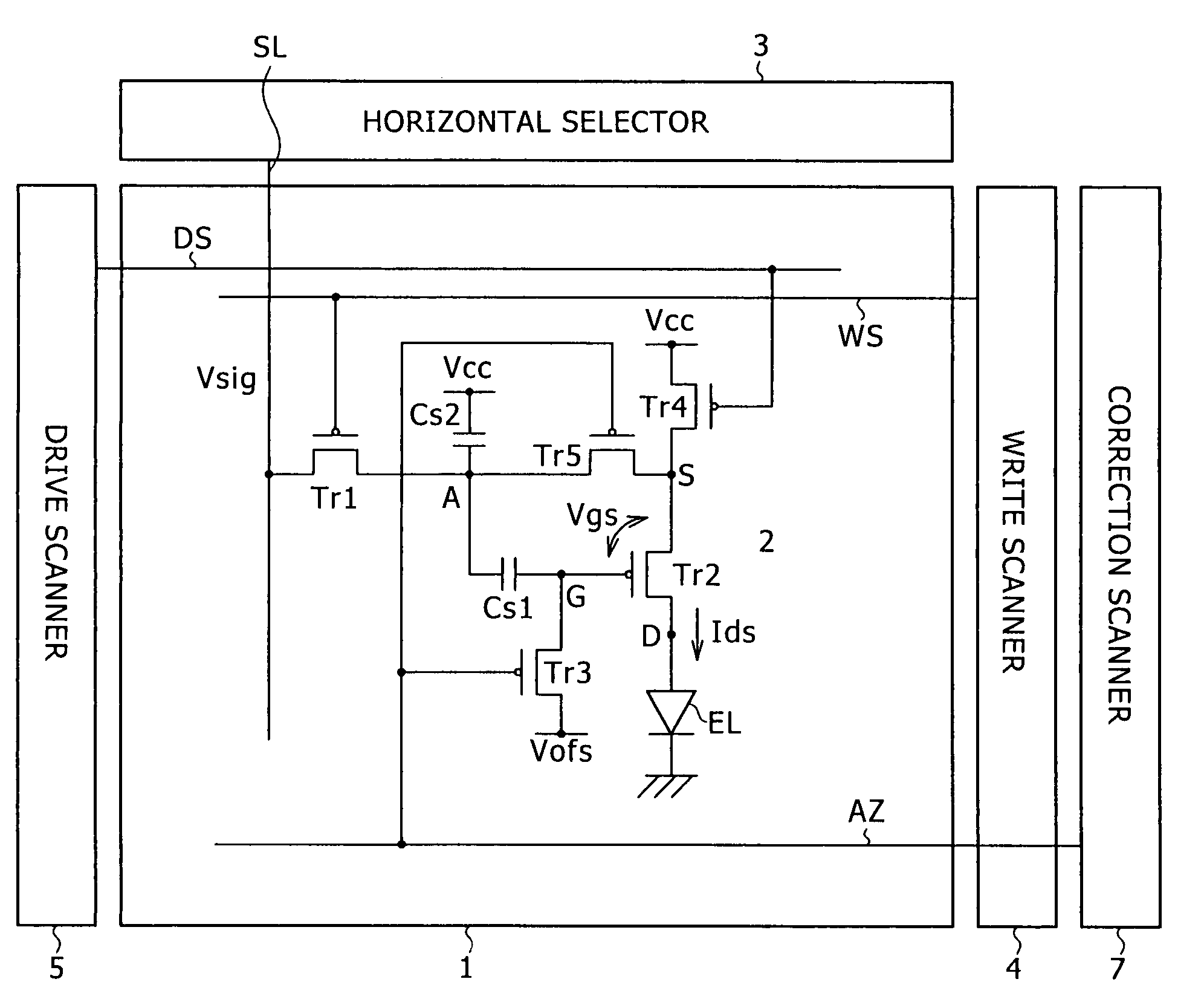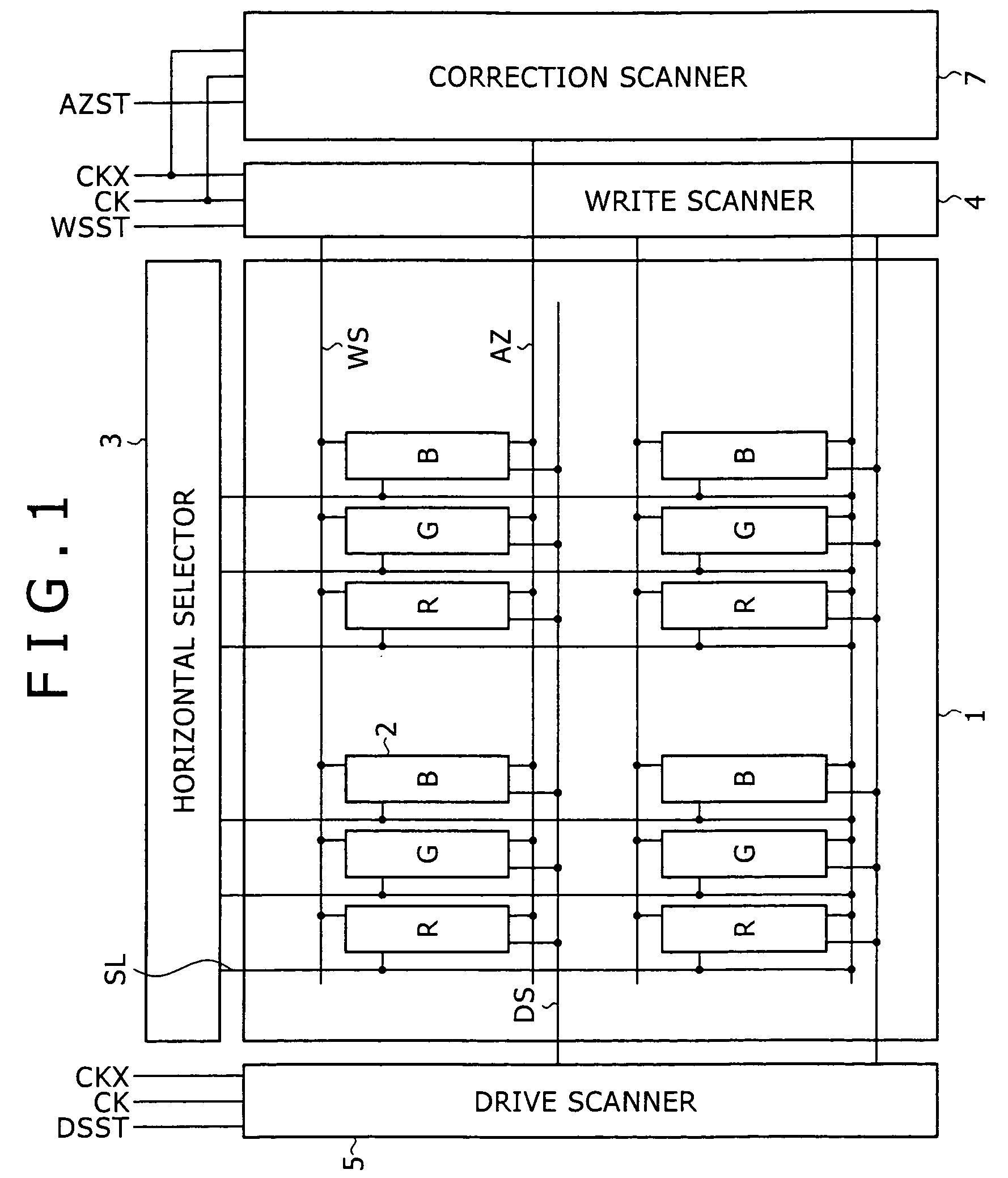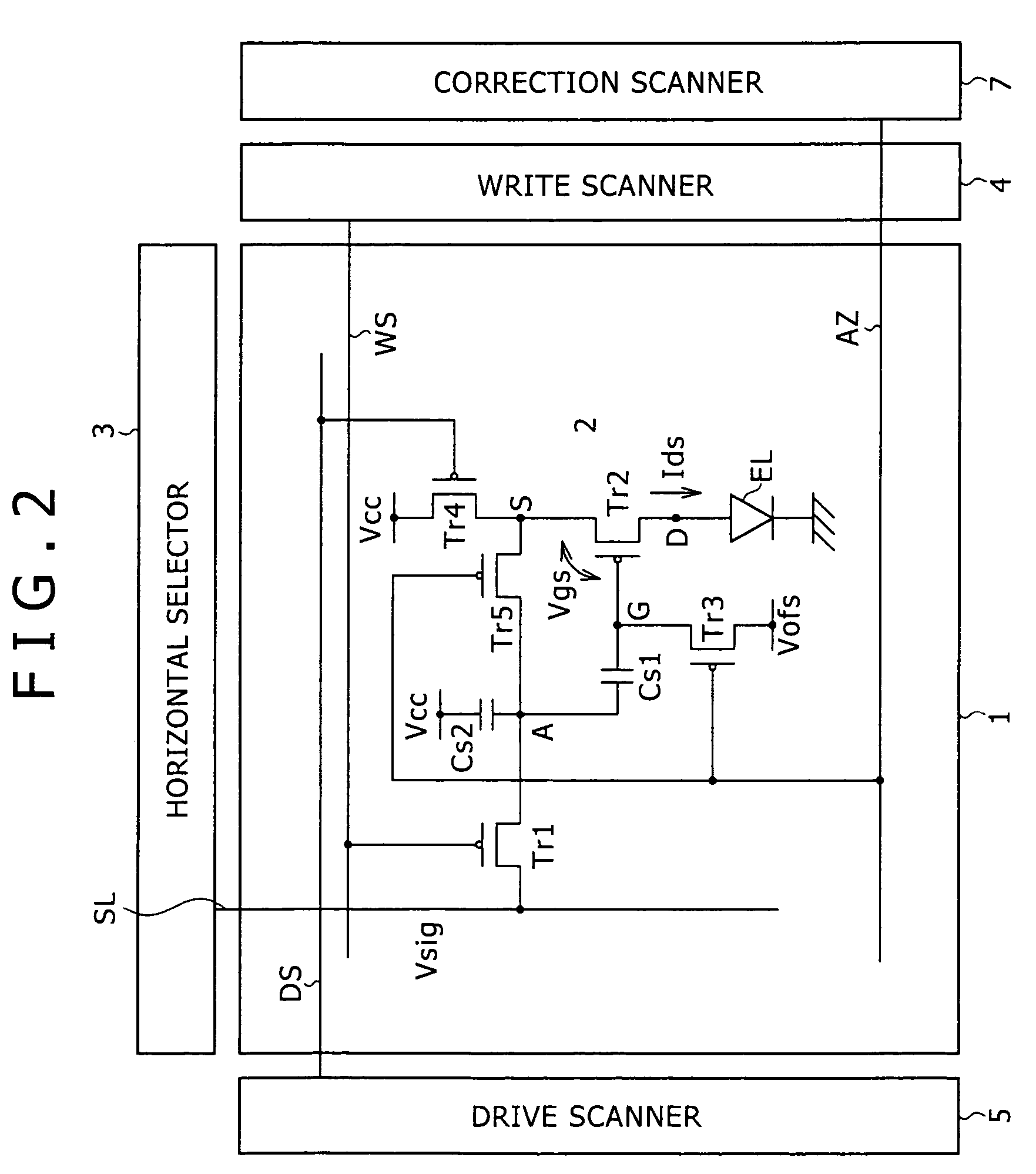Pixel circuit, display and driving method thereof
a technology of pixel circuit and driving method, which is applied in the field of pixel circuit, can solve the problems of spoiling the uniformity of the screen, and the difficulty of fabricating large-size and high-definition displays, so as to reduce the influence of the carrier mobility, and reduce the influence of the threshold voltage
- Summary
- Abstract
- Description
- Claims
- Application Information
AI Technical Summary
Benefits of technology
Problems solved by technology
Method used
Image
Examples
Embodiment Construction
[0029]Embodiments of the present invention will be described in detail below with reference to the accompanying drawings. Initially, in order to clearly show the concept of the invention, the basic configuration of an active-matrix display will be described with reference to FIG. 1. Referring to FIG. 1, the active-matrix display is composed of a pixel array 1, which is an essential part, and peripheral circuit parts. The peripheral circuit parts include a horizontal selector 3, a write scanner 4, a drive scanner 5, a correction scanner 7, and so on. The pixel array 1 is composed of row scan lines WS, column signal lines SL, and pixels R, G and B that are disposed in a matrix at intersections between the scan and signal lines. Although this display includes pixels of three primary colors of RGB to allow color displaying, the present invention is not limited thereto. Each of the pixels R, G and B is composed of a pixel circuit 2. The signal lines SL are driven by the horizontal select...
PUM
 Login to View More
Login to View More Abstract
Description
Claims
Application Information
 Login to View More
Login to View More - R&D
- Intellectual Property
- Life Sciences
- Materials
- Tech Scout
- Unparalleled Data Quality
- Higher Quality Content
- 60% Fewer Hallucinations
Browse by: Latest US Patents, China's latest patents, Technical Efficacy Thesaurus, Application Domain, Technology Topic, Popular Technical Reports.
© 2025 PatSnap. All rights reserved.Legal|Privacy policy|Modern Slavery Act Transparency Statement|Sitemap|About US| Contact US: help@patsnap.com



